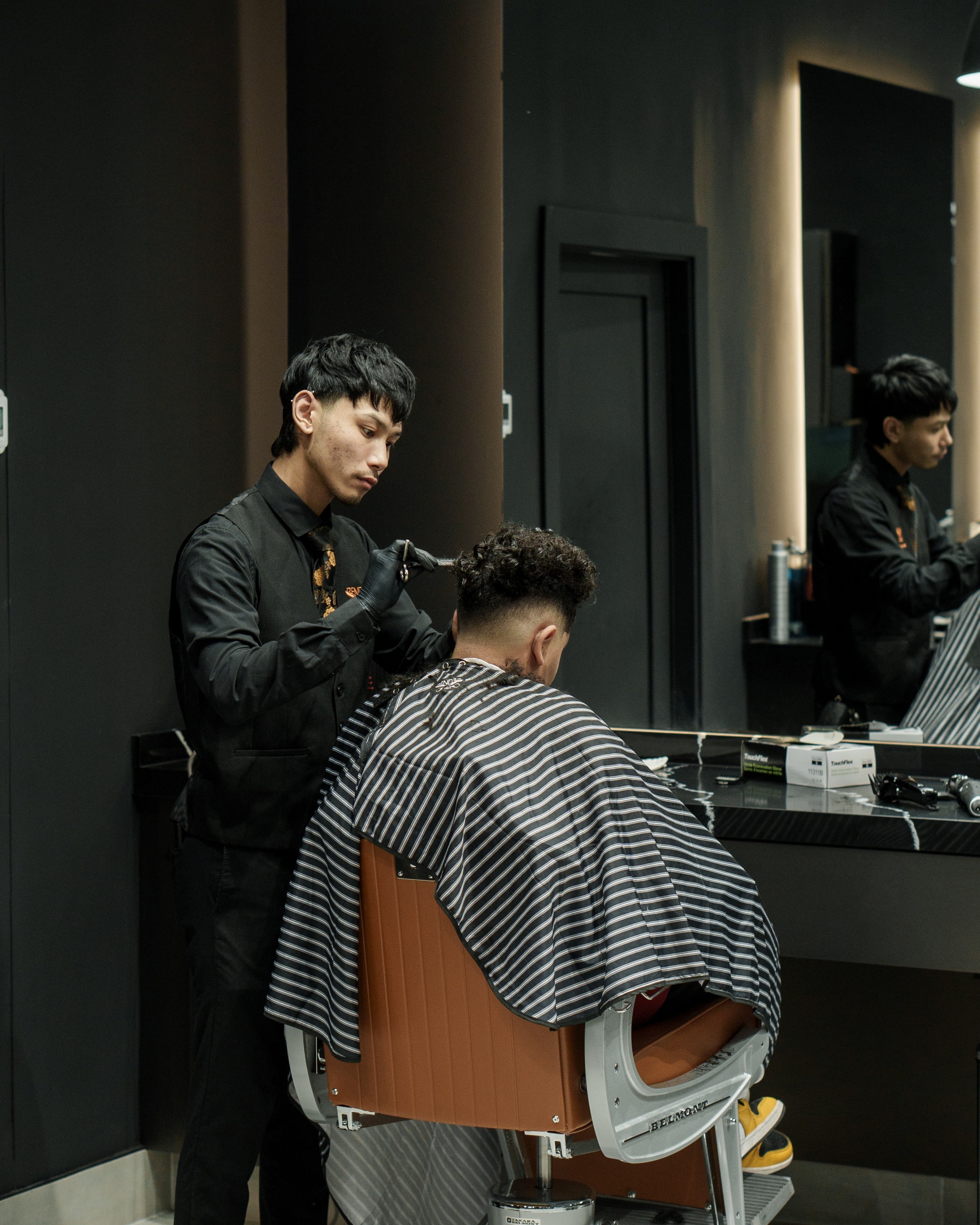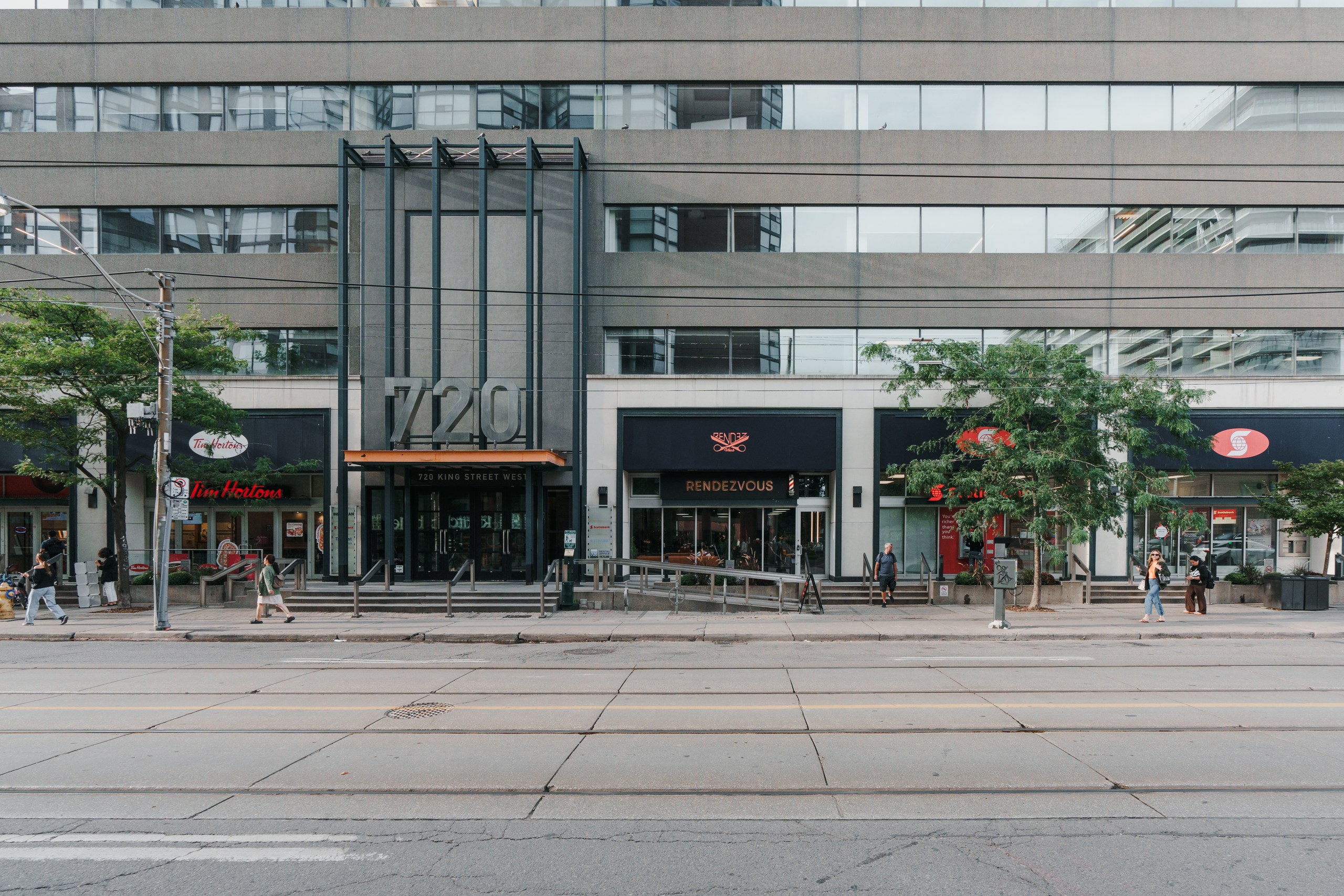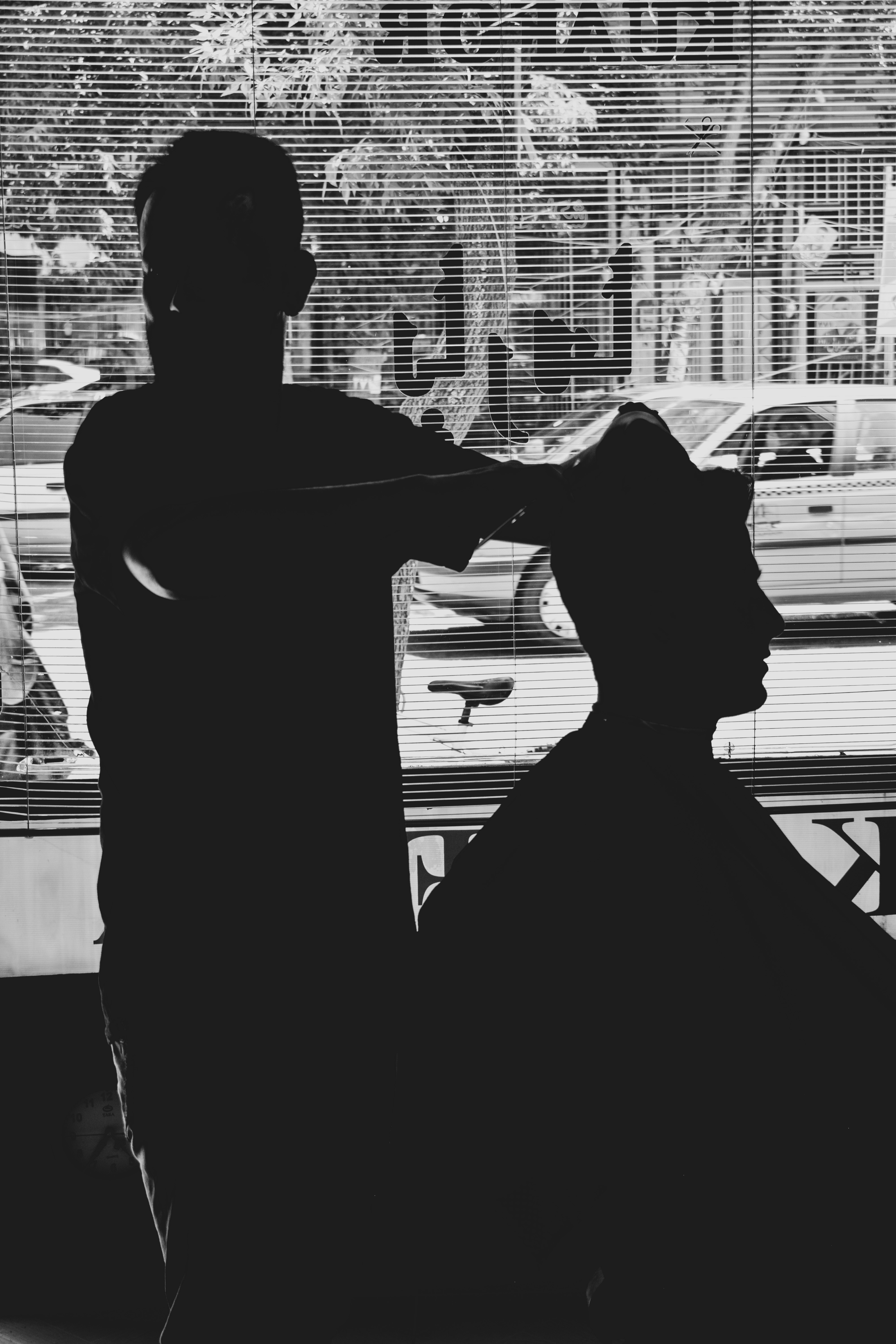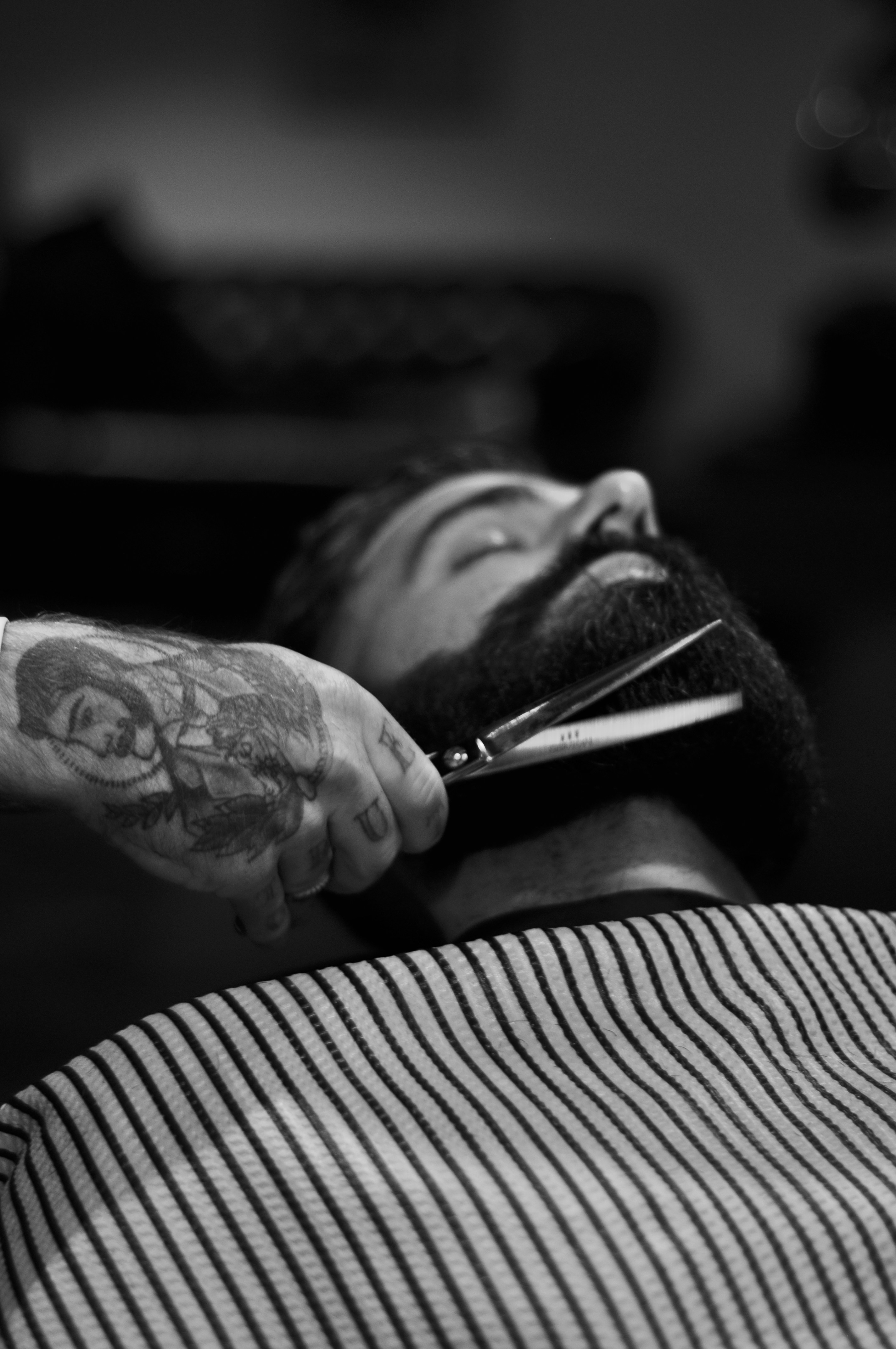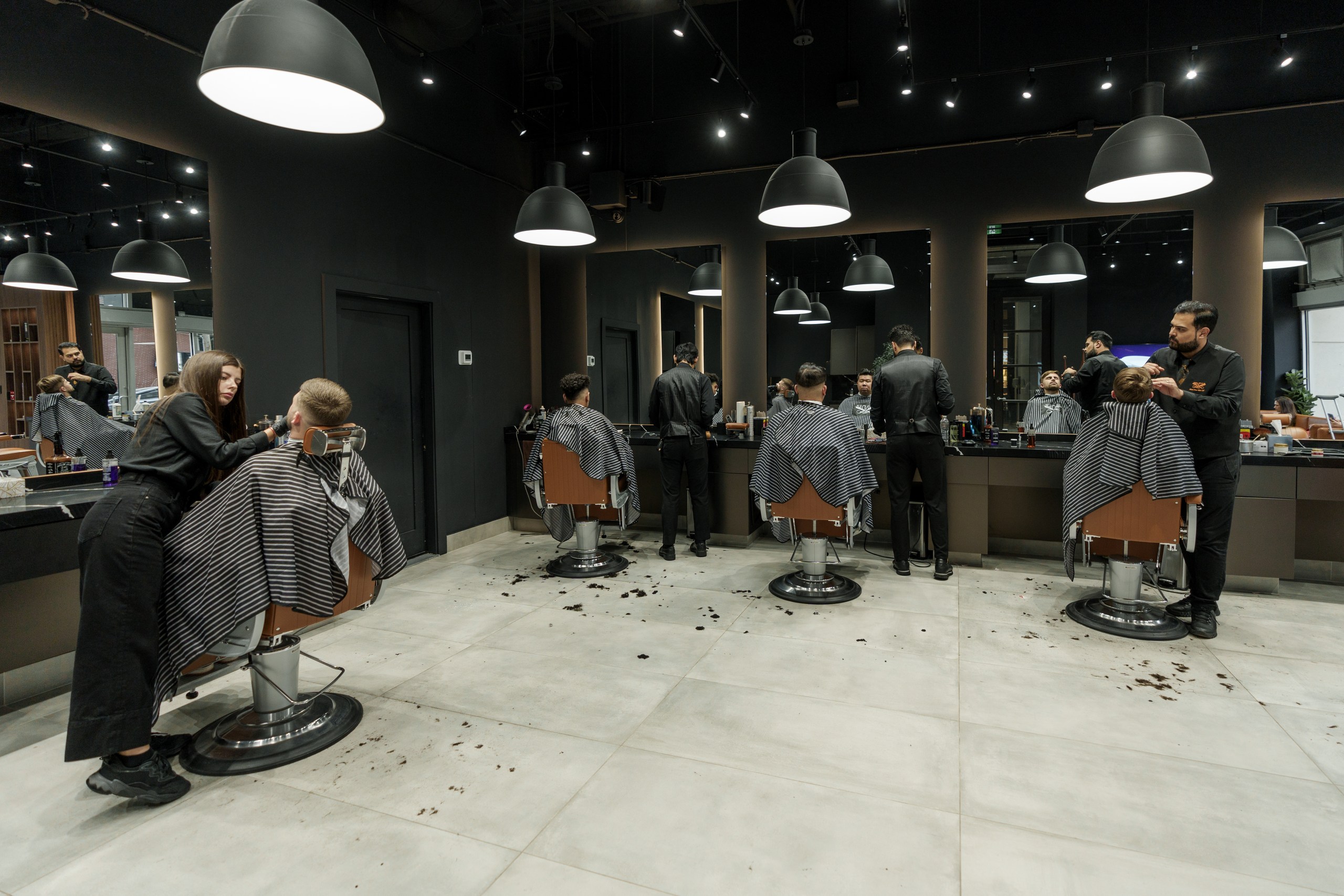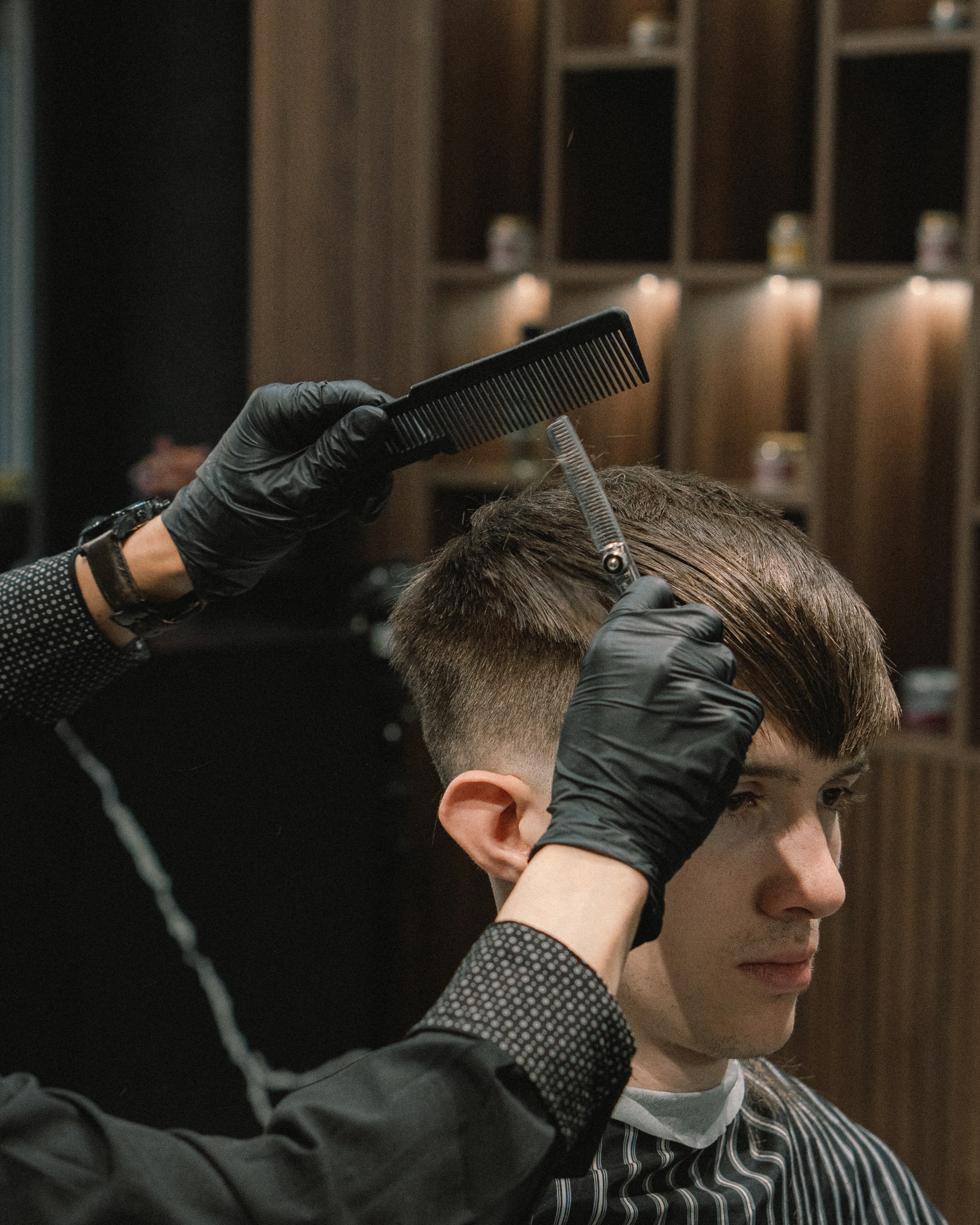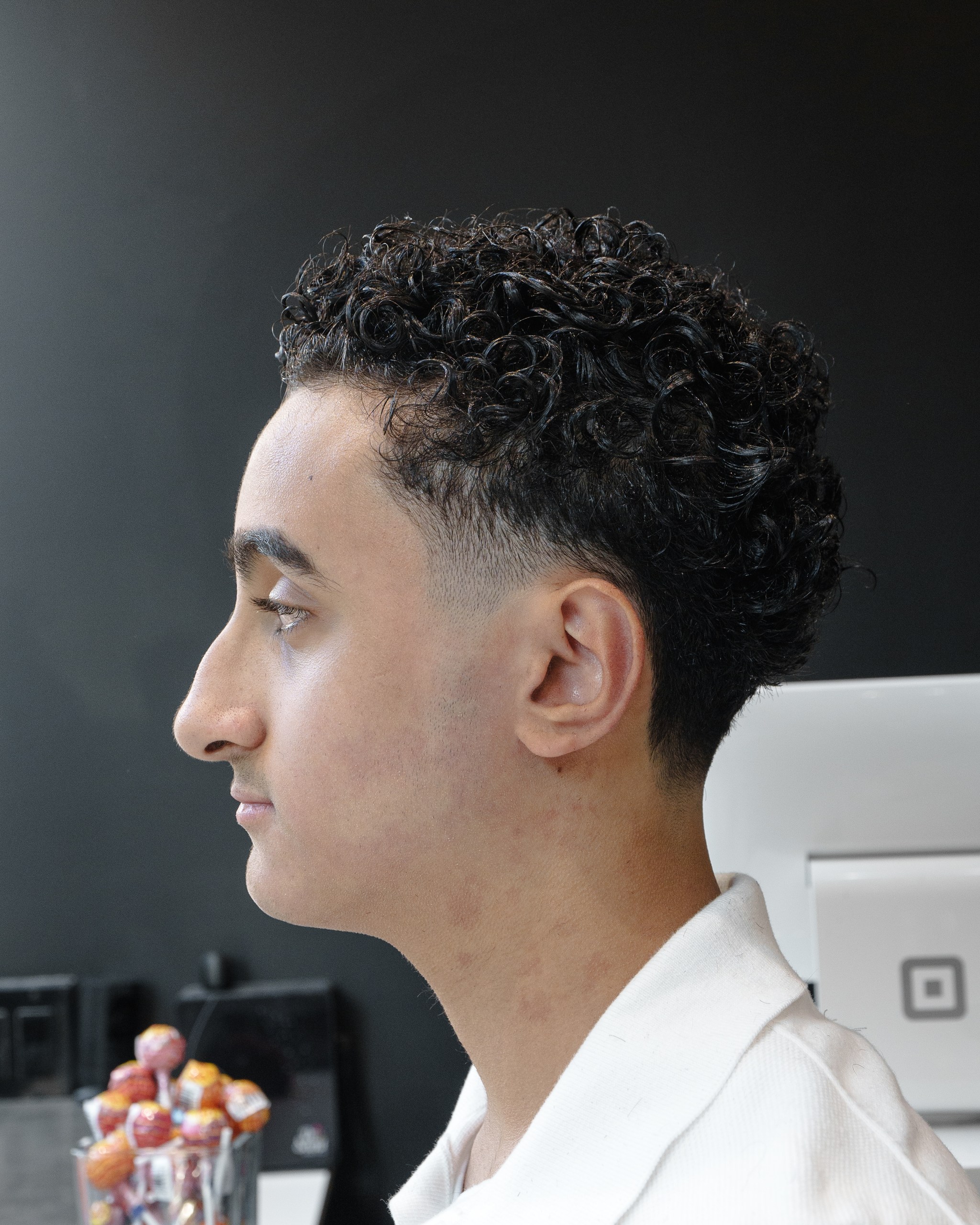Walk down Bay Street on any weekday morning and you'll see the same phenomenon playing out on every corner: two guys who are probably the same age, but one looks like he's ready to take on the world while the other looks like he's already given up on it. Same suits, similar builds, but completely different energy. Nine times out of ten, the difference comes down to their haircuts.
At Rendezvous Barbers, we see this transformation happen in real time. A guy sits down looking tired and worn down, and walks out looking five years younger and ten times more confident. It's not magic – it's understanding how specific haircut choices either add years to your appearance or strip them away.
The truth is, certain cuts are aging accelerators that make you look older than your dad, while others are youth fountains that keep you looking sharp well into your forties and beyond.
The Aging Accelerators: Cuts That Add Years
Some haircuts are like putting on a suit that's two sizes too big – they immediately make you look older, tired, and out of touch. These cuts might have worked once, but they're now working against you.
The Generic Business Cut: You know this one – short on the sides, slightly longer on top, parted to one side, completely forgettable. It's the haircut equivalent of beige walls. This cut screams "I stopped caring about my appearance in 2008" and instantly adds corporate staleness to your look. The problem isn't that it's professional – it's that it's lazy professional.
The Outdated Fade: Fades evolve constantly, and nothing dates you faster than wearing last decade's version. The heavy contrast fades from 2015, the perfectly round lineup from 2010, or the overly harsh temple fades from the early 2000s all scream that you haven't updated your style in years. When your fade looks like it belongs in an old Instagram post, so do you.
The Midlife Crisis Mane: Long hair can look great, but there's a fine line between stylish length and desperately clinging to your twenties. Hair that's long without shape, style, or intention reads as "I'm trying to recapture my youth" rather than "I'm confidently aging." When your hair length is clearly a statement about refusing to age gracefully, it has the opposite effect.
The Comb-Over Denial: Fighting your natural hairline is a losing battle that makes you look older than just embracing it. Whether it's growing one side long to sweep over thinning areas or maintaining a hairline that no longer exists naturally, denial haircuts age you more than baldness ever would.
The Overgrown Mess: There's a difference between relaxed, textured hair and hair that just looks like you've given up. Length without intention, shape without structure, or growth without grooming all suggest that you've stopped trying – and that always reads as older.
The Youth Boosters: Cuts That Turn Back Time
The best age-defying haircuts don't look like you're trying to be younger – they make you look like the sharpest version of your current age.
The Modern Textured Crop: This cut works at 25 and at 45 because it's based on creating texture and movement rather than fighting natural growth patterns. The key is having enough length on top to create that lived-in, effortless texture while keeping the sides clean and contemporary. It suggests confidence and style without trying too hard.
The Strategic Fade: A well-executed modern fade creates sharp, clean lines that instantly make you look more put-together. The key is choosing fade styles that are current but not trendy – techniques that enhance your natural features rather than following whatever's popular on social media.
The Confident Buzz: When done right, a buzz cut is the ultimate power move. It shows you're secure enough in yourself that you don't need hair to look good. The key is choosing the right length for your head shape and maintaining clean lines that show intention rather than convenience.
The Integrated Look: The best age-defying cuts work with your facial hair as a complete package. A well-groomed beard can actually make you look younger by adding definition to your jawline and creating visual balance. The cut and beard should work together, not compete for attention.
The Precision Classic: Sometimes the most youthful choice is a perfectly executed classic cut – think a sharp side part with modern proportions or a clean crew cut with contemporary lines. The key is precision in execution rather than innovation in concept.
The Psychology of Hair and Age Perception
Understanding why certain cuts age you helps you make better choices about your own style.
Sharp lines vs. soft edges: Clean, precise lines read as youthful energy and attention to detail. Soft, undefined edges suggest fatigue or neglect. This is why a crisp lineup can instantly make you look more alert and engaged.
Contrast creates energy: The visual contrast between dark hair and clean skin creates dynamism that reads as youthful. This is why guys with salt-and-pepper hair often look younger when they maintain sharp contrast through precise cutting rather than trying to hide the gray.
Effort vs. trying too hard: The sweet spot is looking like you care about your appearance without looking like you're desperately fighting age. Cuts that work with your natural features and current life stage always look better than cuts that fight against reality.
Current vs. trendy: Cuts that are contemporary but not obviously trendy have staying power. They read as stylish rather than try-hard, which always looks more mature and confident.

Toronto's Professional Culture Factor
Working in Toronto creates specific pressures around haircuts that can inadvertently age you if you're not careful.
The Bay Street Trap: The pressure to look "professional" often pushes guys toward safe, boring cuts that add years to their appearance. The most successful Toronto professionals understand that looking sharp and looking boring aren't the same thing.
The Industry Factor: Different Toronto industries have different style expectations. What works in tech might age you in finance, and what's expected in law might look stuffy in creative fields. Understanding your industry's style culture helps you choose cuts that look appropriate without looking dated.
The Seasonal Challenge: Toronto's extreme seasons affect how cuts age you. Hair that looks sharp in summer might look tired by February, while cuts that work under winter hats might look too severe in summer. Year-round style planning prevents seasonal aging.
The Urban vs. Suburban Dynamic: Cuts that fit in the suburbs might look out of place downtown, and vice versa. Understanding where you spend your time helps you choose cuts that make you look current rather than displaced.
The Maintenance Factor
How well you maintain your cut often matters more than the cut itself when it comes to age perception.
The Two-Week Rule: Most cuts start looking dated around the two-week mark, especially around the ears and neckline. Guys who look consistently young are usually getting touch-ups every 2-3 weeks rather than full cuts every 6-8 weeks.
Home Styling Reality: Cuts that require complex styling routines often end up looking messy and aging because most guys won't maintain them daily. The best age-defying cuts look good with minimal styling effort.
Product Compatibility: Cuts that only look good with specific products often fail in real life. The most youthful-looking guys have cuts that work with simple, reliable styling routines.
Growth Pattern Planning: Cuts that look great fresh but terrible after a week of growth will make you look unkempt most of the time. Planning for how cuts grow out prevents the constant cycle of looking great for three days and tired for eleven.
Age-Appropriate Doesn't Mean Boring
The biggest mistake guys make is assuming that looking age-appropriate means looking boring or conservative.
Confidence over Trends: The most youthful-looking guys wear cuts that fit their personality and lifestyle rather than chasing whatever's popular. Confidence always reads as younger than insecurity.
Quality over Quantity: A simple cut executed perfectly always looks better than a complex cut done poorly. Investing in quality cutting rather than frequent style changes creates more consistent results.
Evolution over Revolution: Making gradual adjustments to your style as you age looks more natural than dramatic changes. The guys who look youngest are often those who've evolved their style rather than completely reinventing it.
Personal Style Integration: Cuts that work with your overall style and personality always look more natural than cuts that seem borrowed from someone else's aesthetic.
The Science Behind Visual Age Perception
Understanding how people actually assess age through appearance helps explain why certain cuts work better than others.
Facial Proportion Enhancement: The best cuts enhance your natural facial proportions rather than fighting against them. Cuts that create better balance between your features make you look more attractive, which always reads as younger.
Attention Direction: Strategic cutting can direct attention toward your best features and away from signs of aging. The right cut makes people notice your eyes or jawline rather than thinning areas or gray hair.
Energy Communication: Clean, well-maintained cuts communicate energy and vitality, which are strongly associated with youth. Messy or neglected cuts suggest fatigue, regardless of your actual age.
Modern Context: Cuts that feel current within contemporary style contexts read as youthful, while cuts that feel disconnected from current aesthetics automatically seem dated.
Red Flags That Age You Instantly
Certain haircut choices are immediate age-adders that you should avoid regardless of your actual age.
Fighting Your Hairline: Any cut that requires you to style hair over areas where it's not naturally growing will always look forced and aging.
Outdated Proportions: Cuts with proportions that were popular years ago instantly date you to that era. Hair fashion moves faster than clothing fashion.
Overly Complicated Styling: Cuts that require extensive daily styling often end up looking messy in real life, which always ages you.
Mismatched Formality: Cuts that don't match your lifestyle formality level – too casual for your profession or too formal for your actual life – always look artificial.
The Bottom Line
The difference between looking older and younger often comes down to making smart, intentional choices about your haircut rather than defaulting to whatever's easiest or most familiar.
The most important insight? Looking younger isn't about chasing youth – it's about looking like the best, most confident version of your current age. Cuts that work with your natural features, fit your lifestyle, and show that you care about your appearance will always make you look better than cuts that fight against reality.
The guys who consistently look younger than their age aren't necessarily blessed with better genetics – they're making better decisions about their style and maintaining those decisions consistently.
Conclusion
Ready to discover which cuts make you look your best at your current age? Visit Rendezvous Barbers in Toronto and let us show you how the right haircut can take years off your appearance while still looking completely natural and appropriate for your lifestyle.
Book your appointment today and see how strategic cutting can make you look younger, sharper, and more confident. For haircuts that enhance rather than age you, visit Rendezvous Barbers. We help you look like the best version of yourself at any age.


